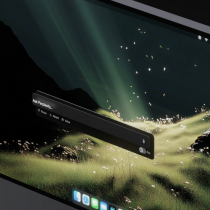That eight-core smartphone isn’t as fast as you think it is

Ever since the first quad-core smartphone and tablet designs began to show up in market, we’ve been asking whether or not these devices offered meaningful performance improvements over lower core counts. Not only are there software issues to contend with, since without multi-threading support, adding new cores is literally useless, there are also significant concerns around power consumption. Adding more cores means more heat, and smartphones, with ~2.5W operating envelopes, just aren’t designed for high-speed multi-core operation.
A new paper from Moor Insights & Strategy delves into these questions and doesn’t come away with many wins for the “Add more cores” team. Extensive testing shows that the gains associated with adding CPU cores taper sharply above four, while performance sometimes regresses moving from four cores to eight. The analysts compared multiple devices, including the LG G4 (Snapdragon 808, 2x Cortex-A57 + 4x Cortex-A53), the Xiaomi Mi 4i (8x Cortex-A53), LG G Flex 2 (quad-core 4x Cortex-A57 + 4x Cortex-A53) and the HTC Desire 820S (8x Cortex-A53). The full paper is available for download, but here are two of the highlighted workloads.








































































